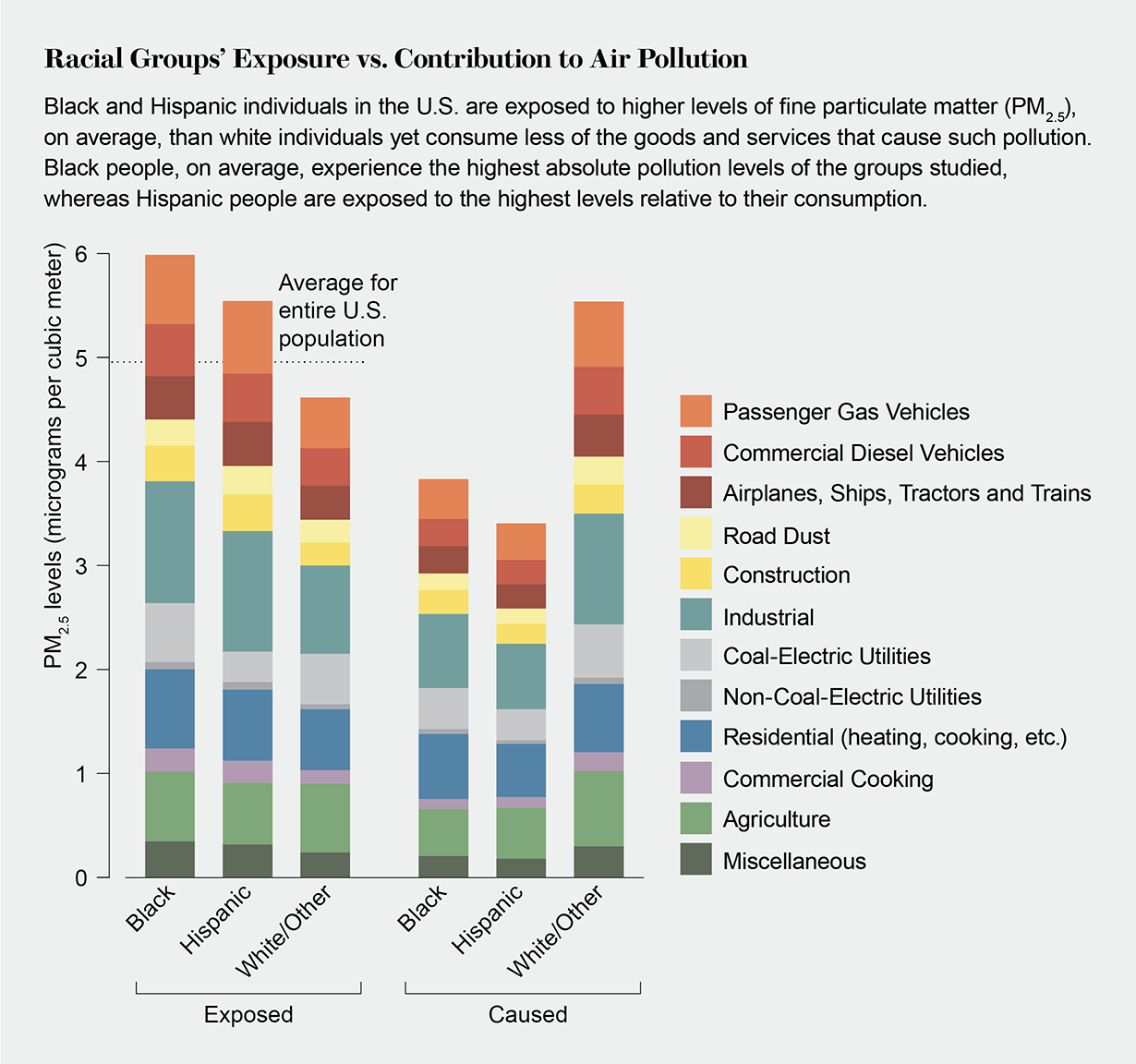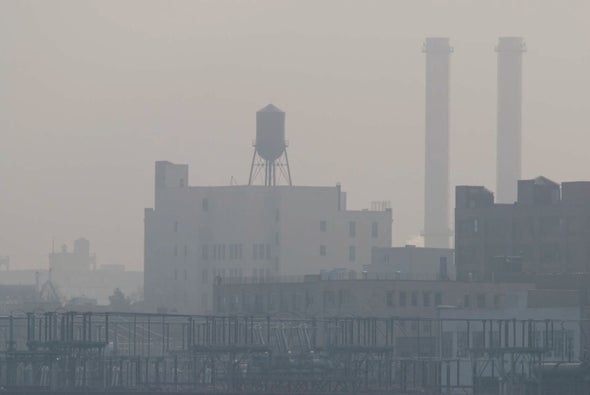Harlem and the South Bronx have some of the highest asthma rates in New York City. And these predominantly black and Hispanic neighborhoods—studded with smokestacks and crisscrossed by gridlocked highways—are emblematic of a large body of research showing clear racial disparities in exposure to air pollution.
A study published in March in the Proceedings of the National Academy of Sciences USA shows that even though black and Hispanic people in the U.S. are exposed to more air pollution than white people, these groups consume less from the industries generating much of that pollution. The findings put hard data behind inequities that environmental justice advocates have reported on the ground, revealing that racial minorities bear a disproportionate amount of the costs of emissions tied to higher levels of consumption. “It echoes things we’ve been saying for decades in the environmental justice movement,” says Kerene N. Tayloe, director of federal legislative affairs at nonprofit WE ACT for Environmental Justice.
The study also found that these disparities persist despite substantial overall reductions in air pollution in recent decades. Robert Bullard, a professor of urban planning and environmental policy at Texas Southern University, who was not involved with the work, says this finding underscores the need to craft policies that reduce such pollution in the hardest-hit communities.

The researchers focused on fine particulate matter with a diameter of 2.5 microns or less (PM2.5), generated by construction, fires and the combustion of fossil fuels. These particles can contain hundreds of different chemicals and can penetrate deep into the lungs, contributing to heart and lung disease. As part of its study, the team estimated that 102,000 people die prematurely every year from PM2.5 emissions from human-made sources (as opposed to wildfires or other natural sources). That number is nearly double the amount of people who die annually from car crashes and murders combined, says study co-author Jason Hill, a biosystems engineer at the University of Minnesota.
To trace exposure back to the root cause of emissions, the investigators mined publicly available economic and PM2.5 data. They linked emissions from various sources (such as coal-fired power plants or diesel vehicles) to economic activity that largely drives these emissions (such as electricity use or food purchases). Next they apportioned this consumption among racial groups and found stark disparities: on average, black and Hispanic people are exposed to 56 and 63 percent more PM2.5, respectively, than the amount generated by their consumption, whereas white individuals are exposed to 17 percent less (graphic). “It’s a pretty dramatic difference,” Hill says.
The analysis made clear that a wide range of economic activity contributes to PM2.5 exposure. It also showed that the higher relative contribution from white people was not the result of buying more from highly polluting sectors but rather of higher overall consumption. Household income was a factor in the observed differences, but it did not account for the entire mismatch.
Even though the total number of deaths from PM2.5 exposure has declined in recent years, most likely because of regulations, the idea “that everyone is receiving the same level of protection is blown away” by the new findings, Bullard says. The results from this study, he adds, emphasize the need to undo the legacy of previous policies and decisions that placed polluting infrastructure disproportionately in low-income and minority communities. “How can we somehow change this paradigm that it’s okay to keep polluting communities of color and communities that have contributed least?” Bullard asks. Hill says authorities cannot simply target any one category of emitter, such as coal-powered plants or diesel vehicles; all the involved industries must be addressed.
Scientists, legislators and communities will need to jointly work out which policies and regulations can tackle overall pollution while reducing these inequities, Hill and others say. This new framework for tracking pollution exposure provides a tool to do that, says Anjum Hajat, an epidemiologist at the University of Washington School of Public Health, who was not involved with the research. It could, she says, be used to evaluate how regulations targeting certain air pollution sources actually reduce exposure for various groups—and could also potentially reveal any unintended consequences, such as shifting pollution to other areas.
The work also underscores how important existing air pollution regulations are at a time when the Trump administration has moved to roll back several of them, including some governing pollution from coal-fired power plants and fuel efficiency in vehicles. When reached for comment, an Environmental Protection Agency spokesperson said the agency “will continue to monitor and report on key environmental indicators in low-income communities as a part of our commitment to healthy air, water and land for all Americans.”
Research shows that even low levels of PM2.5 can be harmful to the most vulnerable groups, such as children with asthma, so officials should be ratcheting up efforts instead of backing off, Hajat says. “We have seen this decline in [overall] air pollution over time” even as consumption has increased, she says, “so imagine what could happen if we really did make an effort as a society.”


